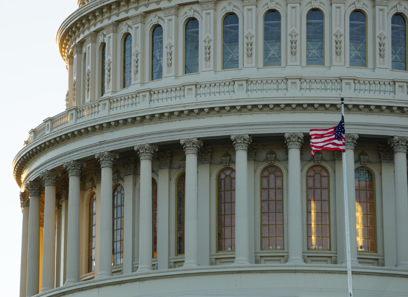M&A Outlook: Exploring the Growing Importance of Emerging Market Opportunities
M&A Outlook: Exploring the Growing Importance of Emerging Market Opportunities
Blog Article
The Impact of Mergers and Acquisitions on Market Characteristics and Competition
The landscape of mergings and acquisitions provides a complex interplay between cultivating development and possibly weakening affordable integrity within markets. As companies go after tactical alignments to enhance efficiency and development, the implications on consumer selection and market pricing warrant mindful scrutiny.
Introduction of Mergers and Acquisitions
Mergers and purchases (M&A) play a crucial role fit the landscape of contemporary business, as companies seek to improve their competitive edge and attain critical purposes. M&A transactions entail the debt consolidation of firms or assets via numerous economic transactions, consisting of mergings, where 2 companies integrate to create a new entity, and acquisitions, where one business purchases an additional outright. These activities are driven by a myriad of factors, such as the quest of harmonies, diversity of item offerings, and the wish to enter brand-new markets.
The M&A procedure normally includes numerous stages, consisting of strategic preparation, due persistance, negotiation, and integration (Emerging Market Opportunities). Business conduct detailed evaluations to determine potential targets that align with their growth methods and assess the financial and functional ramifications of a deal. Regulatory considerations likewise play an important duty, as antitrust laws are developed to stop monopolistic methods that might hurt competition
As companies browse the intricacies of M&A, the outcomes can dramatically influence stakeholders, consisting of employees, customers, and investors. For that reason, comprehending the characteristics of M&A is vital for reviewing their ramifications within the broader context of market behavior and affordable placing.
Positive Results on Market Characteristics
The consolidation of companies via procurements and mergers can bring about significant favorable results on market characteristics. Among the primary benefits is the enhancement of operational performances. By incorporating resources, firms can improve procedures, reduce redundancies, and accomplish economic climates of range, ultimately boosting and lowering costs earnings. This effectiveness can equate right into reduced rates for consumers, fostering an extra open market setting.

In addition, increased market share resulting from mergings can give firms with greater negotiating power with distributors and suppliers, assisting in boosted terms and problems that can benefit the general supply chain.
Negative Repercussions for Competition

Additionally, the elimination of competitors with procurements can stifle innovation. When principals combine, smaller sized companies might battle to contend, leading to a homogenization of solutions and items. The resultant lack of competitors can develop an environment where staying firms have much less incentive to buy r & d.
In addition, mergings can create obstacles to entry for new firms, as the merged entity might leverage its improved sources to control the marketplace. This can prevent prospective entrants, therefore limiting competitors and technology in the long-term.
Eventually, while acquisitions and mergers can supply critical advantages, their possible to weaken competition requires mindful factor to consider of their more comprehensive effects on the marketplace dynamics. The equilibrium go right here in between growth and competitive integrity stays an important problem in assessing such company strategies.
Regulatory Factors To Consider and Oversight
Governing structures play a crucial duty in shaping the landscape of mergers and procurements, guaranteeing that market characteristics continue to be affordable and reasonable. These frameworks are designed to protect against anti-competitive actions and to protect customer rate of interests. Governing bodies, such as the Federal Trade Commission (FTC) in the USA and the European Payment in the EU, review recommended mergings and acquisitions based on their prospective influence on competitors within the market.
The analysis process entails a thorough examination of the market share, capacity for monopolistic practices, and the overall economic implications of the purchase. Regulatory authorities typically enforce conditions or call for divestitures to alleviate concerns over decreased competitors, making certain that the joined entity does not dominate the marketplace unfairly.
This joint strategy aids to foster a balanced regulative atmosphere that advertises development while guarding competitive practices. Inevitably, efficient regulative factors to consider are vital in keeping market stability and encouraging healthy competition in the face of advancing business landscapes.
Study and Real-World Instances
Frequently, situation researches of significant mergings and acquisitions highlight the profound results these transactions can have on market dynamics. The 2000 merger between AOL and Time Warner offers as an archetype, where the prepared for synergies failed, causing a radical decrease in shareholder value. This case highlights exactly how cultural misalignments and overestimation of market possibility can interfere with competition.
In comparison, the procurement of WhatsApp by Facebook in 2014 exemplifies an effective integration that improved the communication landscape. Emerging Market Opportunities. Facebook leveraged WhatsApp's individual base to boost its solution offerings, page successfully increasing its market prominence while keeping competitors in the messaging field
An additional substantial situation is the merger of Exxon and Mobil in 1999, which produced among the world's largest oil firms. This loan consolidation led to better effectiveness but elevated worries regarding minimized competition in the power market, triggering regulative examination.
These instances highlight the complex interplay in between purchases and mergings and market characteristics, showcasing both the prospective benefits and pitfalls that can develop, ultimately forming competitive landscapes across markets.
Conclusion
Mergers and acquisitions play a crucial duty fit market characteristics and competitors. While they can result in raised performances and technology, they also position risks such as lowered competitors and greater customer rates. Reliable regulatory oversight is necessary to ensure that the advantages of M&An activities are made best use of while reducing adverse effect on market competition. A well balanced technique can assist maintain customer well-being and foster an affordable landscape that encourages both growth and innovation.
One significant concern is the possibility for minimized market competitors, as mergers often lead to the loan consolidation of market power amongst less gamers. Regulatory bodies, such as the Federal Profession Commission (FTC) in the United States and the European Payment in the EU, evaluate suggested mergings and purchases based on their prospective impact on competitors within the market.

Mergers and purchases play an essential function in forming market dynamics and competition. Reliable governing oversight is vital to make sure that the benefits of M&A tasks are optimized while minimizing unfavorable influences on market competitors.
Report this page